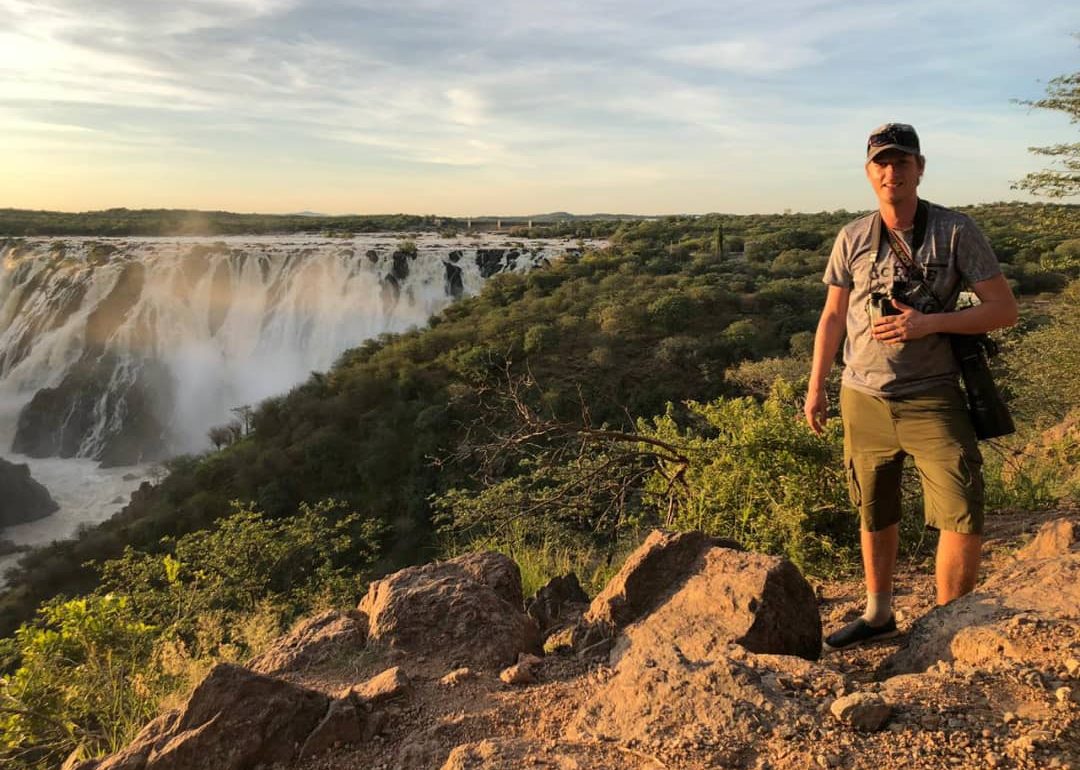
What is your favorite bird species?
This is always a difficult question to answer because all birds are fascinating in their own way. However, the most spectacular bird to me is the Pennant-winged Nightjar. Breeding males have extremely long inner primaries, making them look like some sort of miniature dragon straight from a fairy tale. Seeing them slowly display-flying low through the woodland while producing their mysterious call always gives me goosebumps!
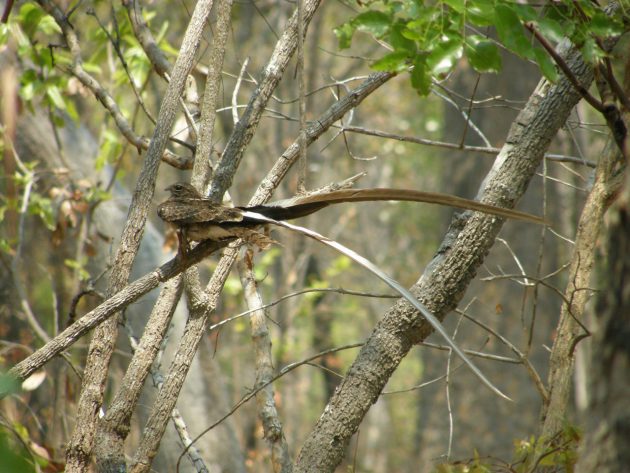
What is your name, and where do you live?
My name is Wouter van Spijker, and I live in Livingstone, Zambia.
What are the main regions or locations you cover as a bird guide?
At the moment I lead tours to all remote corners of Zambia, with occasional trips to other Southern African countries (e.g. Botswana, Namibia, Angola).
How long have you been a bird guide?
I have been a safari guide since 2013, and a specialised bird guide since 2017.
How did you get into bird guiding?
I started working as a safari guide in 2012. I enjoyed this job for many years, but birding has always been my real passion. Therefore, my main goal was to become a bird guide. In 2017 I started doing day trips and short tours with birdwatchers, and realised I absolutely loved it. In 2020 I moved to Zambia and joined the Birding Zambia team, a company I still enjoy working for today.
What are the aspects of being a bird guide that you like best? Which aspects do you dislike most?
There are many aspects that I really enjoy. Birding is my biggest passion, so to be able to do that for a living is an absolute privilege. Also, seeing the excitement in my clients whenever they see a new bird can be really rewarding. I also love the challenge of looking for difficult-to-see or localized birds. Birding also brings you to many remote and unique places that are not often visited by general tourists.
There are not many negatives, being away from family and home for extended periods of time is probably the biggest downside.
What are the top 5-10 birds in your region that you think are the most interesting for visiting birders?
1 – Black-cheeked Lovebird. One of only two endemics of Zambia, and Africa’s most localised Parrot. It occurs in a tiny area between the southern tip of Kafue National Park and the Machile River area, with an estimated population of only 10.000 birds.
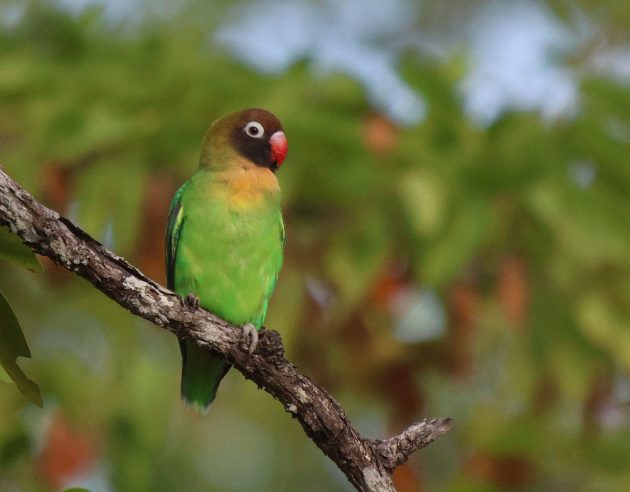
2 – Chaplin’s Barbet. The other endemic of Zambia. An unusual black and white Barbet with a red face and yellow-edged primaries. It occurs very locally in a relatively small area in south-central Zambia, preferring open grassy savanna with lots of Sycamore Figs.
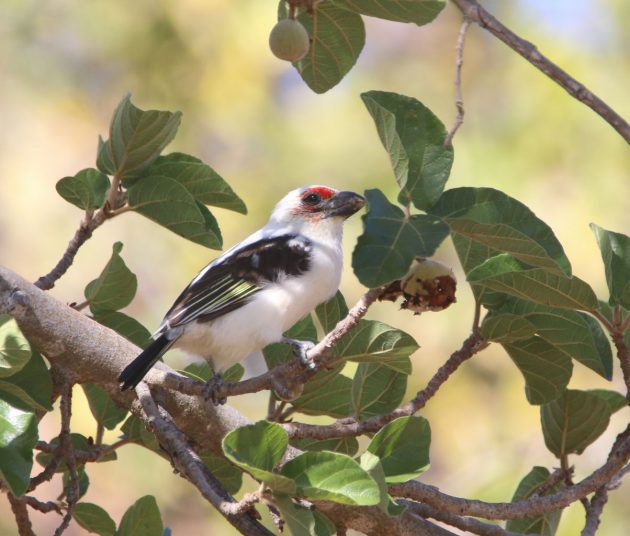
3 – Pel’s Fishing Owl. This is one of the most sought-after species in Africa, and Zambia is a good place to find one. The Luangwa Valley, Kasanka National Park, Kafue National Park, and the middle Zambezi are good places to look for this stunning bird.
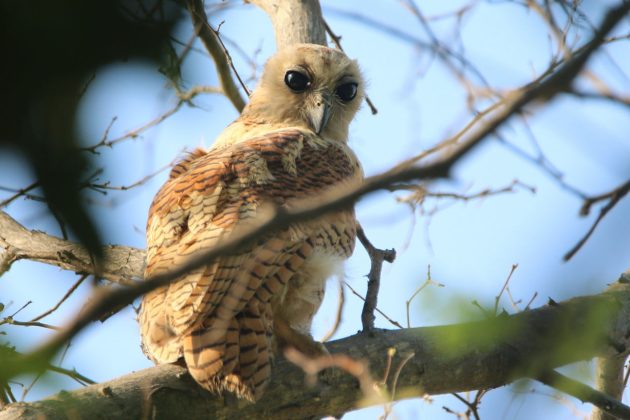
4 – Souza’s Shrike. A hard-to-find species that occurs throughout the country in well-developed Miombo woodlands. Zambia is probably the best country to find this localized bird.
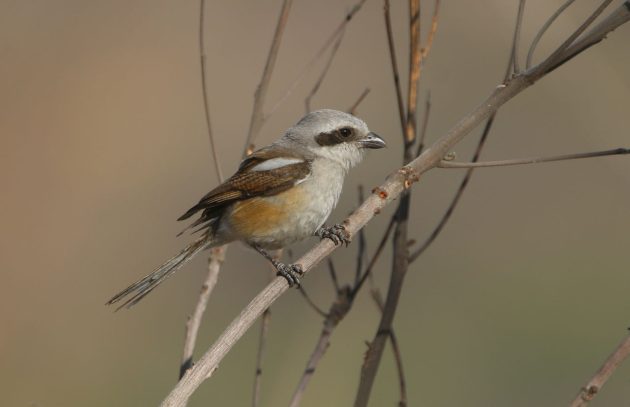
5 – African Pitta. Another very sought-after bird. There are healthy breeding populations in Lower Zambezi, the Luangwa Valley, and Nsumbu National Park, where it prefers dry tropical thickets along drainage lines. The best time to see this enigmatic bird is late November and December, especially on rainy days.
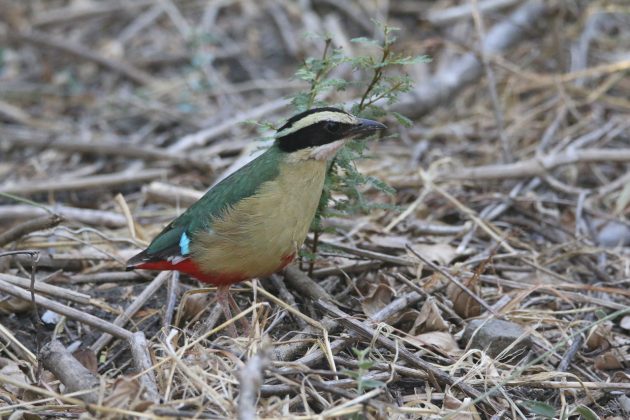
6 – Anchieta’s Barbet. Another tough-to-find species of well-developed Miombo woodlands. It occurs locally and in low densities in places with sufficient fruiting trees.
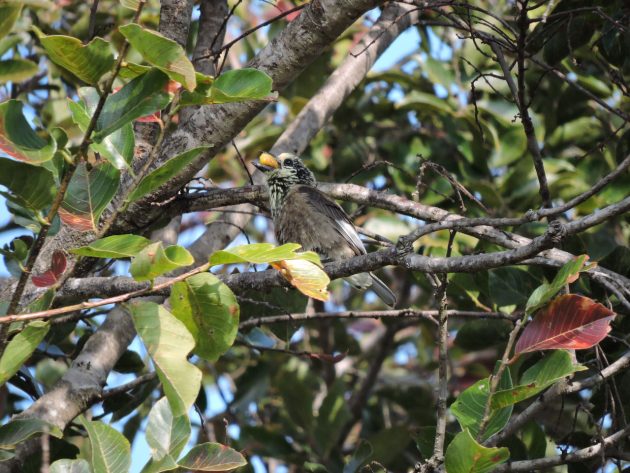
7 – Bar-winged Weaver. Once again a true miombo specialist that can take a lot of time and effort to find. It breeds in humid tall miombo with a lot of Usnea lichens on the trees, which it also uses to construct its nest.
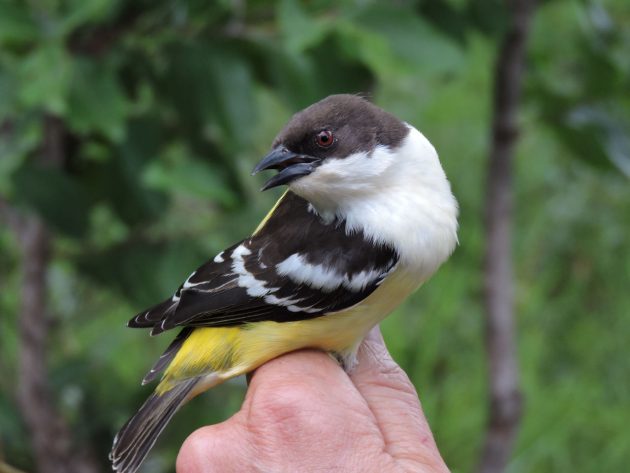
8 – Chestnut-headed Flufftail. One of Africa’s toughest birds to see. There are hardly any photographs of this bird, and even getting a glimpse is nearly impossible. It occurs very locally in the centers of wet dambos at higher elevations. We often try finding this bird on our Zambian safaris, but due to its elusiveness, we can never guarantee a good sighting.
9 – Black-collared Bulbul. A very stunning Bulbul species with a green back, blue-grey head, and black breast band. In Zambia, it is only found in the Mwinilunga area, where it occurs locally at forest edges.
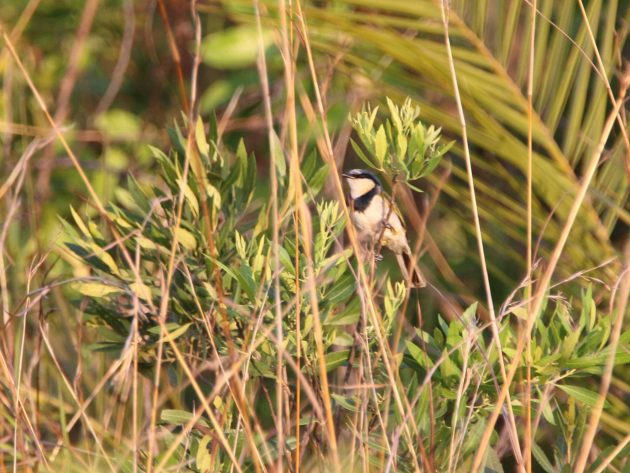
10 – Shoebill. The one-of-a-kind Shoebill has to be included on this list, for obvious reasons. This prehistoric-looking bird has to be high on any birder’s target list. Although most people go to other countries to see this bird (e.g. Uganda), we have healthy populations in the vast Bangweulu swamps, where it is relatively easy to find it.
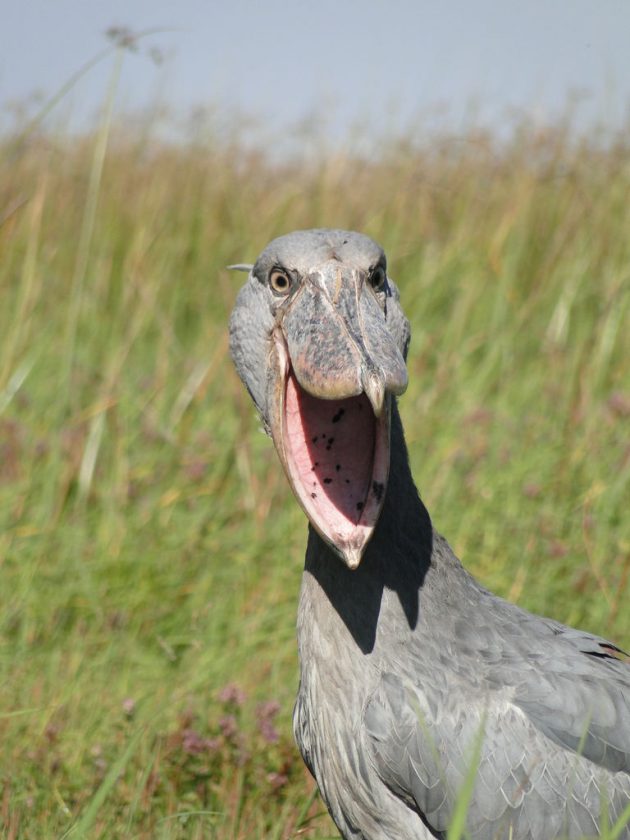
Can you outline at least one typical birdwatching trip in your area? Please briefly describe the locations, the key birds, and the approximate duration of such a trip.
A popular trip we often do starts in my hometown Livingstone where we first admire the mighty Victoria Falls. Here, we look for species like the African Black Swift, Verreaux’s Eagle, and Black Stork. Along the Zambezi River, we usually target birds like African Skimmer, Half-collared Kingfisher, African Finfoot, and White-backed Night Heron.
The trip then continues to the Machile River area, where we look for the endemic Black-cheeked Lovebird.
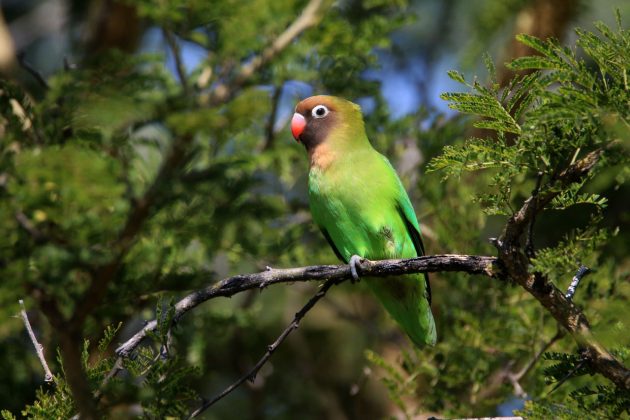
After this, the next destination is the Nkanga River Conservation Area near Choma, to look for Zambia’s second endemic, the Chaplin’s Barbet. This area is also good for many miombo specials, such as Racket-tailed Roller, Southern Hyliota, Cabanis’s Bunting, or Spotted Creeper.
The next destination is Lochinvar National Park, where we camp alongside the famous Chunga Lagoon. This lagoon is part of the Kafue Flats, a large floodplain area that in my eyes is one of Africa’s richest inland wetlands. Lochinvar is famous for its large numbers of waterbirds, and it is common to see dozens or even hundreds of both Wattled and Grey-crowned Cranes. The large mudflats and flooded grasslands also attract thousands of storks, ducks, and waders. Many rare vagrants have been recorded here too. The surrounding grasslands are good for Secretarybird, Denham’s Bustard, and Yellow-throated Sandgrouse.
The last destination on this itinerary is Lower Zambezi, where we look for the iconic African Pitta. We normally look for this bird in the last week of November or the beginning weeks of December, when sightings are easiest to achieve. In recent years we have been very successful in finding this bird, with many amazing sightings of displaying males. Other interesting species in the thicket habitats here are Livingstone’s Flycatcher, Eastern Nicator, Southern Crested Guineafowl, and Narina Trogon.
The typical duration of such a trip is 8 to 10 days.
What other suggestions can you give to birders interested in your area? (for example, what to bring, which season to choose, etc.)
The best season to do a birding trip in Zambia is the end of the dry season or the beginning of the wet season. This would be roughly from August to December. In the wet season, it can be really challenging to travel through Zambia, due to roads being wet making it difficult to drive. Some national parks even close during this time, and many areas become fully inaccessible.
In the dry season, it is also easier to find birds, because the trees have fewer leaves and therefore the visibility is better. However, during this time of the year, it can be extremely hot in Zambia, with temperatures often rising above 40 degrees Celsius. It is therefore very important to protect yourself from the burning sun and drink plenty of water.
Biting flies, sweat bees, and mosquitos can also be a nuisance in Zambia’s woodlands, so it is advisable to bring repellant and prepare yourself mentally for this.
If any reader of 10,000 Birds is interested in birding with you, how can they best contact you?
- Whatsapp: +260 97 1637761
- Facebook: Wouter v. Spijker or Wouter v. Spijker Birding
- Instagram: Africaguide
- E-mail: wouter.v.spijker89@gmail.com
- For safari enquiries: info@birdingzambia.com

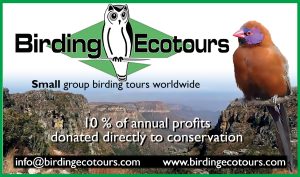
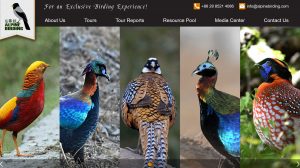
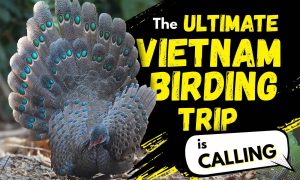
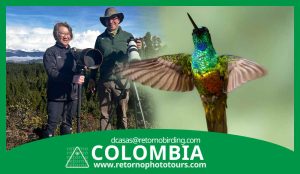
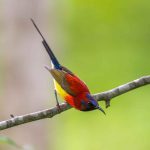
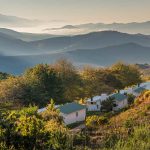
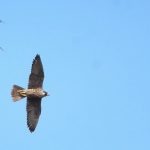
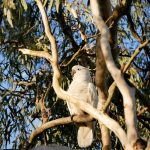
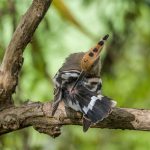
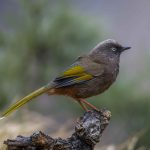

Leave a Comment